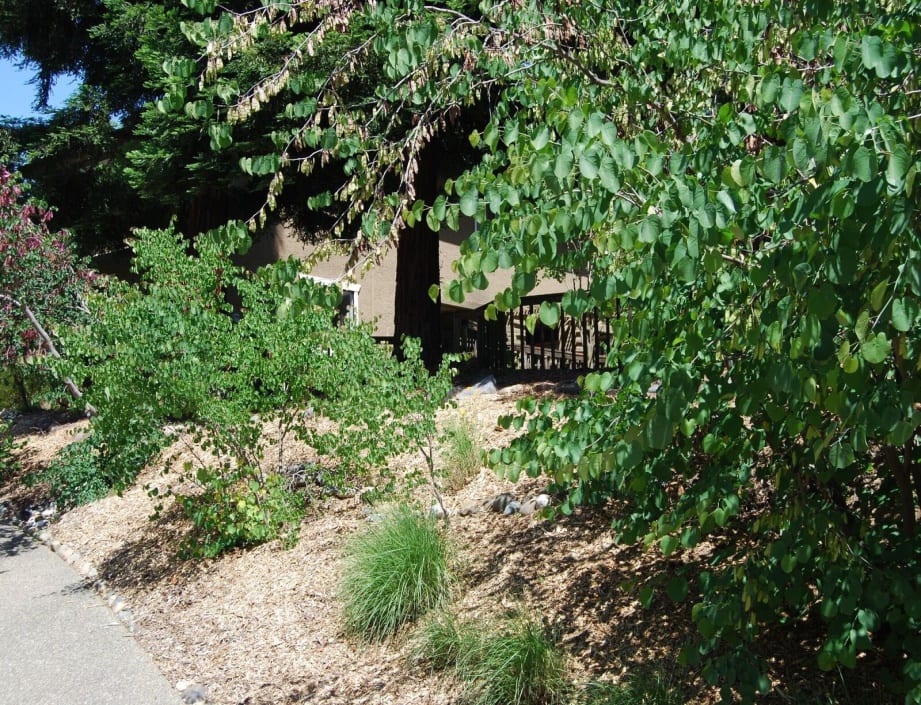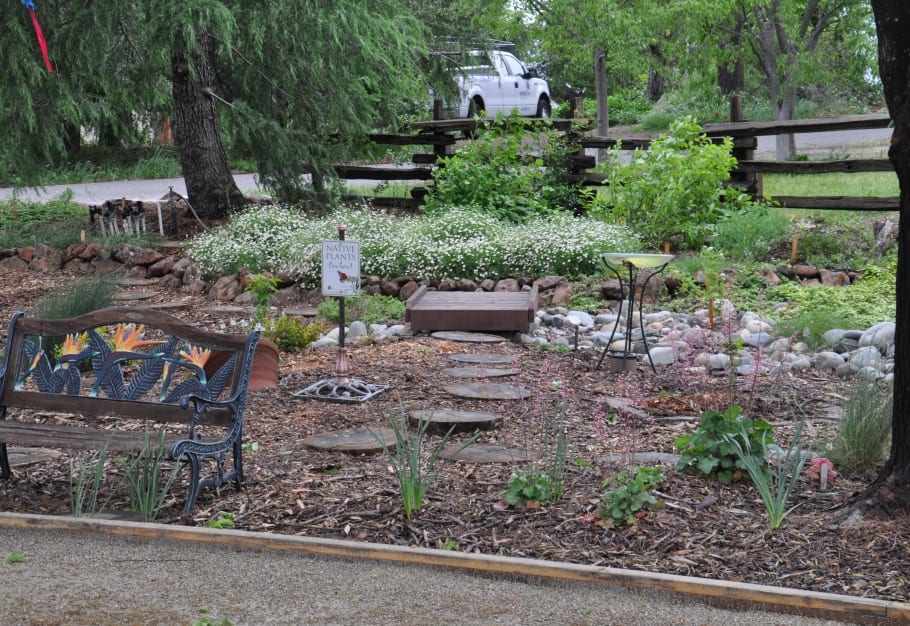Seven years of educating the public on the intrinsic value and benefits of gardening with California native plants
by Colene Rauh
In its seventh year, this Northern Sacramento Valley garden tour features landscapes that demonstrate the versatility and creativity as well as the drought tolerance of most California native plants. Sponsored by the Sacramento Valley Chapter of the California Native Plant Society (CNPS), the tour is intended to educate, inform and inspire both homeowners and landscape professionals about the benefits as well as the aesthetic and drought tolerant aspects of California Native plants in the home landscape. The tour is a free, self-guided event showcasing 20-30 private gardens with at least 50% California natives in the garden. Tour attendance continues to grow, typically reaching around 1,000 attendees.

Foothill Penstemon, a California native plant, sports long and long-lived spikes of blossoms and is very drought tolerant.
This region historically averages 17-20 inches of rain each year but had experienced five years of significant drought until this past winter (2016-17) broke the dry spell with the wettest winter on record (30+ inches). The pattern of rainfall is equally important for the prospect of gardening with native plants. Rains typically start in the fall and continue through spring, with January and February typically being the wettest months. Unlike much of the East, there is virtually no summer rain here. Native plants must survive from late spring to fall with very little additional water, riparian habitat being the exception.
Plants native to this region often have a gorgeous early-to-late spring bloom, and go dormant or semi-dormant in the summer. Other native species and cultivars are often used to augment the bloom, and continue to have color and texture throughout the summer months. While requiring some additional summer irrigation, the level of irrigation necessary to maintain the beautiful gardens pictured throughout this article is still substantially less than the traditional lawn requires.

Wooly Sunflower is a pollinator magnet, attracting beetles, syrphid flies, bees, moths, and butterflies,
The tour showcases a variety of Sacramento Valley Chapter members’ gardens whose owners have committed either a portion of their properties or their entire garden to growing California native plants. Most California natives, particularly those native to the region covered by the tour, are highly drought tolerant and have grown in popularity in light of the recent drought. In addition, California natives, depending on the species planted, draw wildlife to the ordinary residential garden. Beneficial insects (which help with pest problems as well as provide food for birds), butterflies, and pollinators will suddenly appear when native plants are present.
The Gardens Gone Native tour typically has a mix of gardens new to the tour and gardens previously on tour. Both large and small spaces, professionally as well as owner-designed, shady vs. sunny spaces, and rain gardens are all featured on the tour. This year there were two new gardens on tour that were inspired by their owners attending a previous tour, demonstrating the tour’s impact in its intended purpose.
Following are three gardens that have been on tour, representing three unique landscape sizes, shapes, and approaches
Oak Woodland Landscape
The first landscape is on a large lot in which the entire back of the property slopes down to the home. Plantings have been in place for 20 years.

Utilizing the slope, this yard features native Blue Oaks at the top, followed by mature manzanita a little further down, and perennials such as Ceanothus, Fremontodendron, and a variety of grasses framing the rest of the yard. Of course such a landscape would not be complete without California’s official flower, the native poppy, dotting the landscape.

A large stand of Western Redbuds (blooms early) greets visitors as they approach the driveway. The garden was created by Greg Anderson 20 years ago, and continues as a living testament to the celebration of California natives in the home landscape.
A Small Urban Landscape
The second is a small city lot, landscaped both front and back for amazing color. Plantings are four years old.

This small backyard bursts with California native color from Tidy Tips, Asters, yellow yarrow, and penstemon. Salvia round out the blooms and contrast nicely with the Dutchman’s Pipeline growing up the two sides of an attractive metal archway (top right). Dutchman’s Pipeline grows all along the region’s American River Parkway as well as the foothills. This is the only food for the Pipeline Swallowtail butterfly larvae.

This small but intensely planted front yard makes use of many shade-loving Heurchera at the base of a mature California Sycamore. A few non-native species are also included.
A Rain Garden
The third property features a rain garden that captures water from the property, the neighbors’ yards, and the street in order to slow and sink the runoff before it exits the property. As shown here, the garden has been in place for 14 months.

Earthworks is the first and most economical way to “harvest” the water on any given property.
The concept behind Earthworks is to bank the soil in order to capture as much water as possible on the property, slow its movement off of the property, and give it time to “sink” and retain more moisture in the earth layers. Basins are 12 to 24 inches deep. In this example, water is captured from the owner’s property, from the neighbors’ properties, and from the street. It is then run through two basins for filtration. Each basin is mulched with six inches of wood chips to retain moisture. The process creates multiple levels of planting space.

Down in the basin are the plants that like their feet wet: Carmen’s grey rush and Horsetail. Higher up, terraced between the bottom of the basin and the top, are a Button Willow, Scarlett Monkey flower and Yellow-eyed grass (difficult to see).

Finally, the soil extracted to make the basins is used to create elevated rock planting beds for the more drought-tolerant plants. Beds contain a variety of California natives, including: Santa Barbara Daisies, Red twig Dogwood, Flowering Current, Yellow twig Dogwood, Diamond Heights Ceanothus (to the right middle of photo, low spreading with variegated leaves) and, of course, Heuchera.
For more on California native plant gardening, visit sacvalleycnps.org/ and view several virtual garden tours from the past.
About the Author
Colene Rauh developed a passion for native plants eight years ago and has focused on the wildlife that is drawn to her yard – including Monarch butterflies for the last two years. She has been a member of the local chapter of CNPS for seven years and on the Gardens Gone Native Tour planning committee for the last five years. Helping to educate others about the benefits of native plants is one of her passions and her garden has been on tour every other year. She is also a Master Gardener in Sacramento County.
***
Each author appearing herein retains original copyright. Right to reproduce or disseminate all material herein, including to Columbia University Library’s CAUSEWAY Project, is otherwise reserved by ELA. Please contact ELA for permission to reprint.
Mention of products is not intended to constitute endorsement. Opinions expressed in this newsletter article do not necessarily represent those of ELA’s directors, staff, or members.



